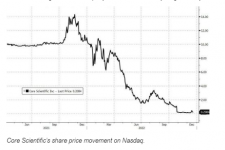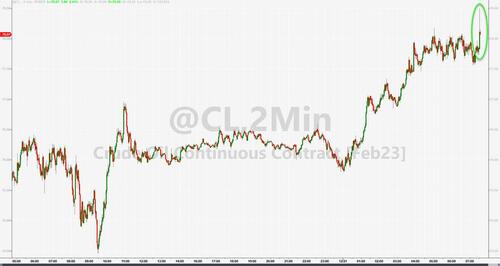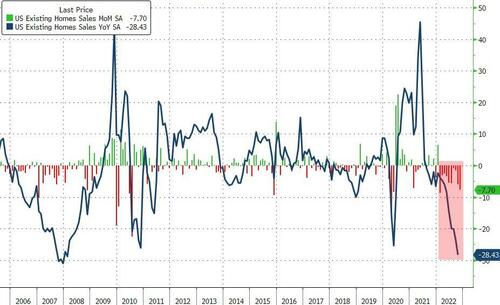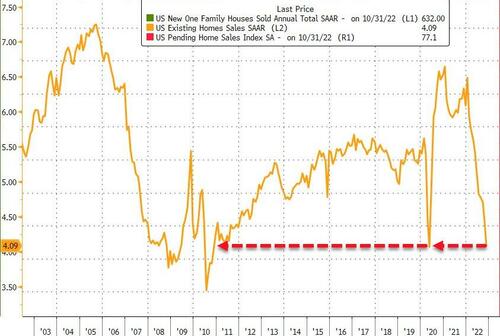We should not abandon the idea of progress. Progress – in perception and in reality – is central to science, freedom, and a thriving society.

brownstone.org
Are We at the End of Progress?
BY PAUL FRIJTERS, GIGI FOSTER, MICHAEL BAKER DECEMBER 21, 2022
The upheavals in the West over the last 33 months or so months were powered by tensions that pre-dated March 2020. In fact they had been building steadily for a number of years until they culminated in a covid-induced earthquake. Does this earthquake in our times signal the end of progress? If so, is this a good or bad thing, and how should Team Sanity react?
These questions were
posed recently on Brownstone by Aaron Vandiver in an excellent piece offering a nuanced perspective that many share. Vandiver confesses to having been strongly influenced by the arguments of the ‘Club of Rome,’ an organisation founded in 1968 that brought out learned reports in the 1970s about how finite natural resources will inevitably mean a limit on growth, and thus that humanity must learn to share what there is in a sustainable manner.
We too grew up in intellectual environments infused with negative attitudes towards the idea of continuous material progress, with several of our extended family members proclaiming regularly that humans’ ‘growth fetish’ was bringing environmental doom to the world, apart from being fundamentally immoral and selfish.
Vandiver laments the devastation wrought by a super-rich elite that has abandoned the idea of progress. He sees them trying to secure their own power and wealth at the expense of everyone else. Yet, Vandiver also fundamentally agrees with the basic argument that humanity must adapt to the end of growth via some great moral reimagining of our societies, also a core argument (incidentally) in the ‘Great Reset’ and other books. He just thinks someone else, rather than the present elite, should lead the reimagining.
As we used to share this belief, we feel we understand where Vandiver is coming from and the seductive nature of what he asks us to imagine: a great Kumbaya-style fraternising among the world’s peoples as they learn to share what there is, rather than engage in a chaotic competitive dash for more and more. But is this inevitable or even feasible, and what does it mean for humanity’s future and for what we should do right now?
If not growth, then what?
Abandoning the idea of growth would leave a gaping hole in the motivational soul of humanity. Where would this lead us?
Abandoning growth as humanity’s target inevitably means a return to a feudal system, in which history tells us that humanity stalled for thousands of years. People in feudal systems were stuck with no growth per capita, but with enough technology to make enslavement possible. Once the size of the pie is believed to be fixed but the means to force others into submission are available, all the energy in the political system is yoked to the cart of helping the powerful secure their share of the pie and minimise the share allocated to others.
A negative equilibrium emerges in which the vast majority are enslaved by a tiny minority, coupled with a supporting ideology to pacify the vast majority by reassuring them that the situation is fair. Such a system also typically features a group of brutal middleman enforcers to keep the non-elite in line. This is exactly what
is emerging right now in the West.
The picture we paint above was the reality of life for many centuries in the empires of China, Russia, medieval Europe, India, Latin America, and elsewhere. The supporting ideology and the names of the elites varied, but the politics was pretty much the same: a situation of servitude for the vast majority, with no say over their own bodies or their own time. The subjugated peoples in Roman, Arab, and colonial societies were slaves.
The medieval European underlings were called “serfs” or “vassals.” In India they were called “untouchables.” In a reality in which progress stops, with apologies to Klaus Schwab, the weak ‘will own nothing, be unhappy, and be frequently beaten and raped.’
The reality we have ‘enjoyed’ during covid times is eerily similar to this depiction. The elites’ hoarding orientation and brutal assaults on others’ personal freedoms are exactly the dynamics described by Vandiver when he writes of rich people musing about how to keep their guards in check once the growth runs out. He tells of their fantasies in which they, as masters, get to put neck collars on their key enforcers to keep them in line.
This consequence of abandoning growth was not articulated by the Club of Rome, nor by the scientists of the IPCC reports that ran the same line, nor by the authors of the Great Reset, nor to our knowledge by any modern guru singing a ‘growth must end’ tune. In the place of a viable instruction manual telling us how things would run without growth sits the weak
deus ex machina of some great fraternisation.
Yet, as we saw with the authors of the Great Reset, the purveyors of the no-growth ideology
don’t complain when enslavement emerges. We conclude that those who pose the solution of a moral revival following an end to growth are really faking it. They want us to see them as great moral saviours who should be trusted with the power to lead us to a land of harmony and sharing. And unicorns, probably.
In contrast to this great fraternity of man, our assessment of the politics of the no-growth mindset is that it will lead to
large-scale enslavement and human misery. We had come to this assessment and
wrote about it extensively for well over a decade before the covid era.
The final frontier?
Leaving aside the likely political fallout of abandoning growth as a target, there is the more basic question of whether there truly are hard limits to growth that will be reached in our lifetimes. If a technological frontier has now been reached, then the political disaster of no-growth enslavement becomes inevitable, no matter how strongly we may resist it. Is this the bleak reality we face?
Limits to growth have been predicted for ages. The Club of Rome was one in a long line of groups making similar prophecies, perhaps the most famous of which is the idea of the Malthusian trap. In “
An essay on the principle of population” (1798), Thomas Malthus argued that any growth would quickly be eaten up by a population explosion, meaning that dire poverty was humanity’s inescapable lot. To Malthus’ eye it was the lower-ability, sicker people (‘the poor’) who bred faster because they had less to lose, resulting in a downward spiral in the quality of life for everyone.
The fear of the rich that the ‘wrong people’ will breed most and will thereby inherit the earth is an ongoing theme in history. The solution to this, from the elite perspective? Deliberate depopulation, making it harder for the ‘wrong people’ to breed, or ensuring that they themselves would outbreed others. One may think that actually trying such solutions is a thing of the past, but just as peasants had to ask their lords permission to be married in feudal times, barriers to marriages were normal during lockdowns, at the whim of “health” bureaucrats.
However, Malthus and his many copycat thinkers have been proven wrong for two centuries, thanks to continued technological advances and improvements in social organisation.
Humanity has managed to get more and more out of Earth’s finite physical resources and out of ourselves. The increased fraction of life spent in education has both improved productivity and greatly limited fertility levels such that, of its own volition, humanity is no longer on a trajectory of population explosion.
Is Malthus still wrong today?
In terms of
income per capita and
rates of poverty, humanity was on a rapid trajectory of improvement right up until early 2020. China was still growing, India was catching up, Southeast Asia was booming, and education and food security were increasing among the peoples of Africa and Latin America. Far more than half of the world’s population were escaping from poverty, ignorance, and food insecurity.
Overall
human life expectancy was increasing almost everywhere before 2020. Judging from the most basic human well-being statistics in 2019 (health, income, education, food-production potential), there was no end to growth in sight in 2019, with plenty of improvement still available for the vast majority of the world population. The sense of rapid progress in the new centres of power (e.g., Shanghai and New Delhi) was palpable.
Overall, growth was not ending at all, either in reality or in terms of its tug on people’s internal ideology. This was in spite of Western elites and a substantial supporting chorus of pearl-clutchers regularly making themselves miserable about growth, which is a major reason why the modern Western ideology is now being abandoned by many countries in favour of the Shanghai coalition that is firmly rooted in a growth ideology.
Looking more closely at the technological frontier, the story is more nuanced. Tremendous technological improvement has plainly been made in every recent decade in fields including AI, the internet, robotics, food technology, transportation systems, and many others. Yet, technological improvement is not really ‘progress’ unless it is capable of improving the lot of humanity. While the potential of technological advances is huge, the translation of this potential into improvement in human thriving is not immediate.
Many a slip between cup and lip
In fact, it is doubtful if improved technology was benefiting populations in the most advanced countries at the start of 2020. Over the prior 30 years, medical discoveries had been plentiful but largely ineffective in improving the overall health of the population. Each year’s
medical advances were mainly aimed at treating specific acute conditions or keeping sick old rich people alive for a few more months at huge expense, thereby perpetuating the employment of masses of medics without moving the dial much on average population health.
Average health was and still is much better served by mass access to basic, cheap health services, something systematically destroyed by the profit motive in public health that sees ‘basic and cheap’ as its enemy. At the start of 2020, life expectancy had
almost plateaued in much of the West and
had even begun regressing in the US, with many health indicators worsening, such as
levels of obesity and the
quality of food consumed. When you can make a bank out of health, it pays to tell everyone they are ill, and it is better yet if they really are ill.
Even discounting the commercial sabotage of public health in the US and elsewhere, essentially no progress has been made over the past generation on increasing the maximum age people can attain. The oldest age reliably recorded to have been reached by any human is
122, and that person died 25 years ago. The
current oldest person is 118. So much for the prophecies of people living to the ripe old age of 200.
Furthermore, the odds of dying once you reach old age whisper no promise that individual humans can last for centuries: at the age of about 95,
one has a 1 in 4 chance of dying that year. When 107, the chance is 1 in 2. At 117, 4 in 5. So even if we managed to see a million people to their 100th birthdays, fewer than one of those on average will make it to 120.
Our bodies just gradually break down and there is nothing we have found so far to prevent our demise, with no realistic prospects on the table either, though there is no shortage of snake-oil salesmen promising the rich that they can deliver on endless life. Nothing new about that fantasy either.
The same lack of actual progress despite the development of fancy new technology can be seen in average productivity levels in the West, which have been
largely stagnant for the past 30 years. AI, robotics, miniaturisation, and so on have had their benefits for humans, but these have been counteracted by negatives, such as dopiness from compulsive mobile phone use.
At the individual level,
IQ scores and the ability
to focus on complex abstractions have both
decreased in the West since the end of the 1990s, which to our minds is likely related to the constant distractions of mobile phones, social media, and email, and the growing presence of mindless bureaucracy. Other negative social factors include congestion in our cities and reduced organisational intelligence in industry. With its real-world impacts on our quality of life mediated by the societal and political forces of the past three decades, new technology has proven roughly a wash in terms of global productivity.
Several variations on this theme are apparent looking across countries and cultures. In the ‘best run’ places in the world (Scandinavia, South Korea, Singapore, Taiwan), progress did happen over the last 20 years, while the US has stagnated and even gone backwards, with the bottom 50 percent of the American population unhealthier, fatter, and poorer, with
lower intelligence to boot.
Many indicators of social mobility have also deteriorated in Western countries, such as the chances of the new generation
earning more than their parents or
having a house of their own. The ladders of success have been well and truly removed for the younger generations, which is exactly what would be expected in a society becoming more feudal. Our youngsters then find themselves dumber, poorer, more anxious, more alone, more belittled, and more dependent on their parents and on the neo-feudal bureaucracy than were previous generations.
Is all lost?
We do not think that the bleak picture painted above our present reality holds for the potential of humanity. The use of new technologies within our current political and social system may have made us dumber, more enslaved, and less healthy in many countries, but that outcome is not inevitable.
It is possible to have the benefits of mobile phones and the internet without suffering the debilitating effects of constant distractions, for example: all we need to do is to learn how we as collectives can better limit our exposure to these distractions, allowing us to relearn how to focus and think deeply. Social experimentation along those lines is already happening, with families and companies learning how to restrict the use of emails and mobile phones to appropriate types and times.
Given the huge loss created by current ‘normal usage,’ this experimentation will likely lead to successful models that will be taken up by society as a whole. Our social systems may be slow at figuring out the uses and pitfalls of technology, but we are highly adaptive creatures and we do figure things out gradually, and then copy the successes of those among us who have figured it out. We do this especially when the gains to be had are great, as they are in this case.
Health care in the coming 50 years in the West is unlikely to get much better than what was seen in Scandinavia and Japan in 2019, but we do think it possible to have better health for the bottom half of society in the US and many other countries simply by rediscovering what works well. We can also figure out how to have active lifestyles, eat healthily, and better caretake our mental health. Many improvements in such areas were already being implemented in various places in 2019.
The reason for our optimism is that healthy behaviours, social warmth, and economic productivity go together, forming a winning package in the field of social competition, and one moreover that has already been found. That recipe must eventually win out against the inferior packages we have seen become dominant over the past 50 years. It is ‘merely’ a matter of the forces of competition and jealousy winning out against the more short-term forces of corruption and neo-feudal fascism that are so dominant today in the US and many European countries.
Part 1 of 2
























 Patriot missile batteries, US Army file image.
Patriot missile batteries, US Army file image.